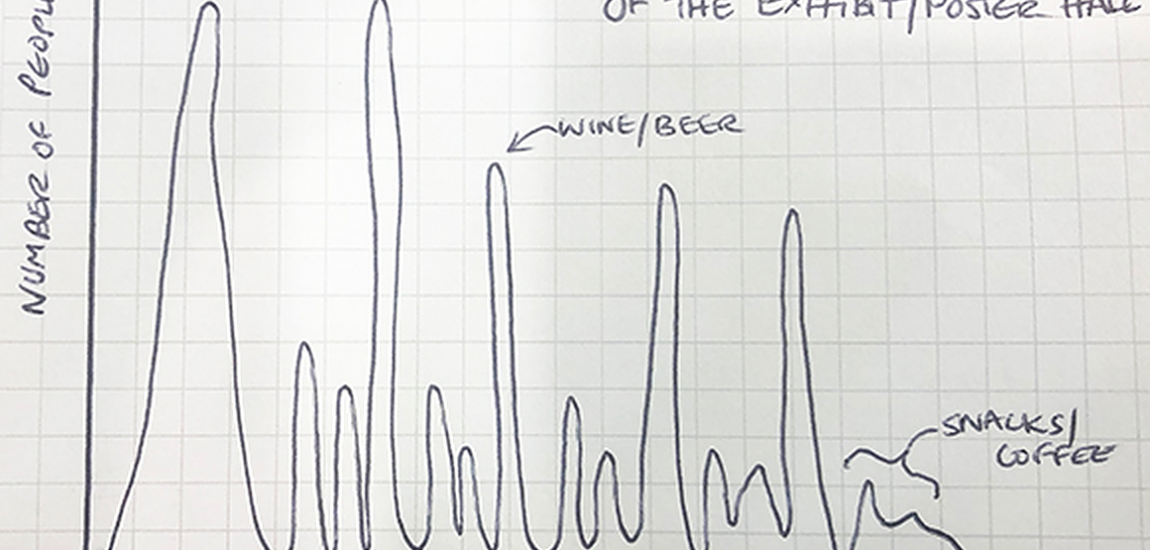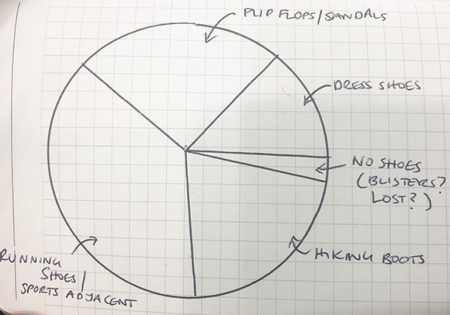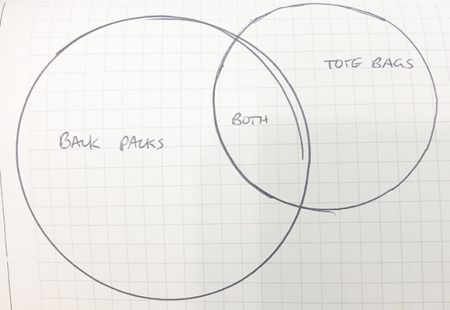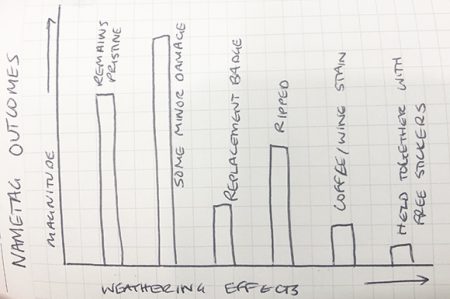
Observations and Hypotheses
Staffing a booth at Goldschmidt 2019 has afforded an unexpected opportunity to observe the conference in a new light. The first, and perhaps most striking, observation is the vast difference in population size of the exhibit/poster hall as a function of time.

We see distinct peaks in hall occupancy corresponding to energy availability. Acceptable forms of energy include coffee, pastries, and ethanol, however we see the biggest effect on population size when both ethanol and food are present. As the week progresses, we see a general downward trend in exhibit/poster hall occupancy, finally trailing off with the realization that both energy and visual/intellectual interest are no longer present.
We also noticed an interesting distribution of footwear. We observed a high proportion of “comfortable” shoes, including hiking boots, running shoes, and sandals. However, conversations with select subjects suggests appearance of chosen shoe does play a factor, with an objectively more professional shoe favored on the day of presentation. One subject also noted that flip flops were chosen due to their superior ventilation. These data are preliminary, and bear further investigation, particularly with regards variation between different scientific conferences, geographic location, and year.


Conferences like Goldschmidt often require participants to carry significant amounts of PPE and survival gear (see Josh Wood’s earlier post on the attendee survival guide). Back packs are the predominant means for transporting this gear, with shoulder/tote bags also a popular choice. Some participants were observed carrying both items at once, however the frequency of this occurrence declined as the availability of tote bags in the exhibit hall declined.
Our last observation pertains to name tag weathering. We observed a general decline in the structural integrity of this year’s name tags, consistent with observations at other conferences. Weathering effects included minor damage due to arm crossing in close proximity to the name tag/lanyard attachment region, minor rips and crumples, and coffee and wine stains. In addition to the obvious “replacement” option, we observed some imaginative abatement solutions, including reinforcing the lanyard attachment region with free stickers from the exhibits and prior lamination of entire name tags.
Future studies will investigate additional parameters related to participant behavior, with a particular focus on occupational safety. Anecdotal evidence at this conference suggests tripping-while-deep-in-discussion and the proximity of chairs to power outlet depressions can result in deep embarrassment and/or minor physical harm.
NB: This post is not a bone fide scientific study, however, thanks to all who contributed.
